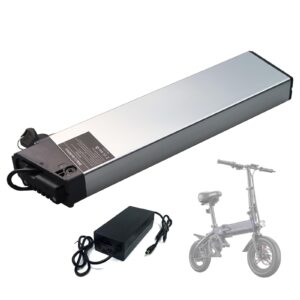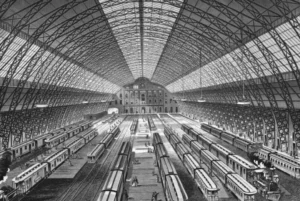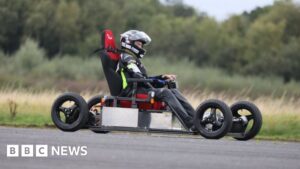“The Sun shines. The wind blows. The tides roll. And we live on a molten rock.”

I started using this as the headline for this blog 15 years ago. At the time, solar and wind power cost much more money to produce than electricity from coal or natural gas.
That has changed.
But what has made the War Against Oil winnable is something else, the lithium ion battery.
Lithium ion lets you scale an electric motor to any size. A train, a car, and a scooter all work the same way. An electromagnetic coil, turning inside another coil, produces power that goes directly to the drive train, with no loss. Because a gas engine has so many parts, less than half its power reaches the wheels.
The energy density of lithium ion is still less than that of gasoline, but it is increasing rapidly. A new lithium-metal battery introduced this year can store 780 watt-hours per kilogram. That’s nearly 4 times more than the battery you’re now using.
This is the revolution. Cars that can go 300 miles on a charge. E-bikes that take you 5 miles, without sweat, in your street clothes, and can go all day before being plugged in. It’s transforming our cities before our eyes.
Already, the air of our inner cities is cleaner than that of our suburbs. They can also be quieter, because electric motors are quieter than gas engines by their nature. Quiet is underrated.
The New New York

Don’t think it’s possible? Over 100 years ago the Vanderbilts did just that with their trains. They made them all electric. Then they covered the rail beds that previously went into their Grand Central Depot to create Park Avenue. That’s what you can do when you have an electric city. Imagine how much real estate value you create if your city does what the Vanderbilts did.
The point is that, thanks to new batteries, they can.
Urban planners are now busy slowing cars and improving bike facilities, because it’s profitable to the developers they work for. As suburbs get their own denser urban cores, they will change in the same way.

The point is electric motors, scaled to the load, are inspiring rapid change in how we get around. Right now, it’s primarily from the bottom up, in scooters and bikes. Soon it’s going to start happening from the top down, as the whole idea of a car is reimagined around distance and load.
The city of the 2030s will look very different than today’s city.










